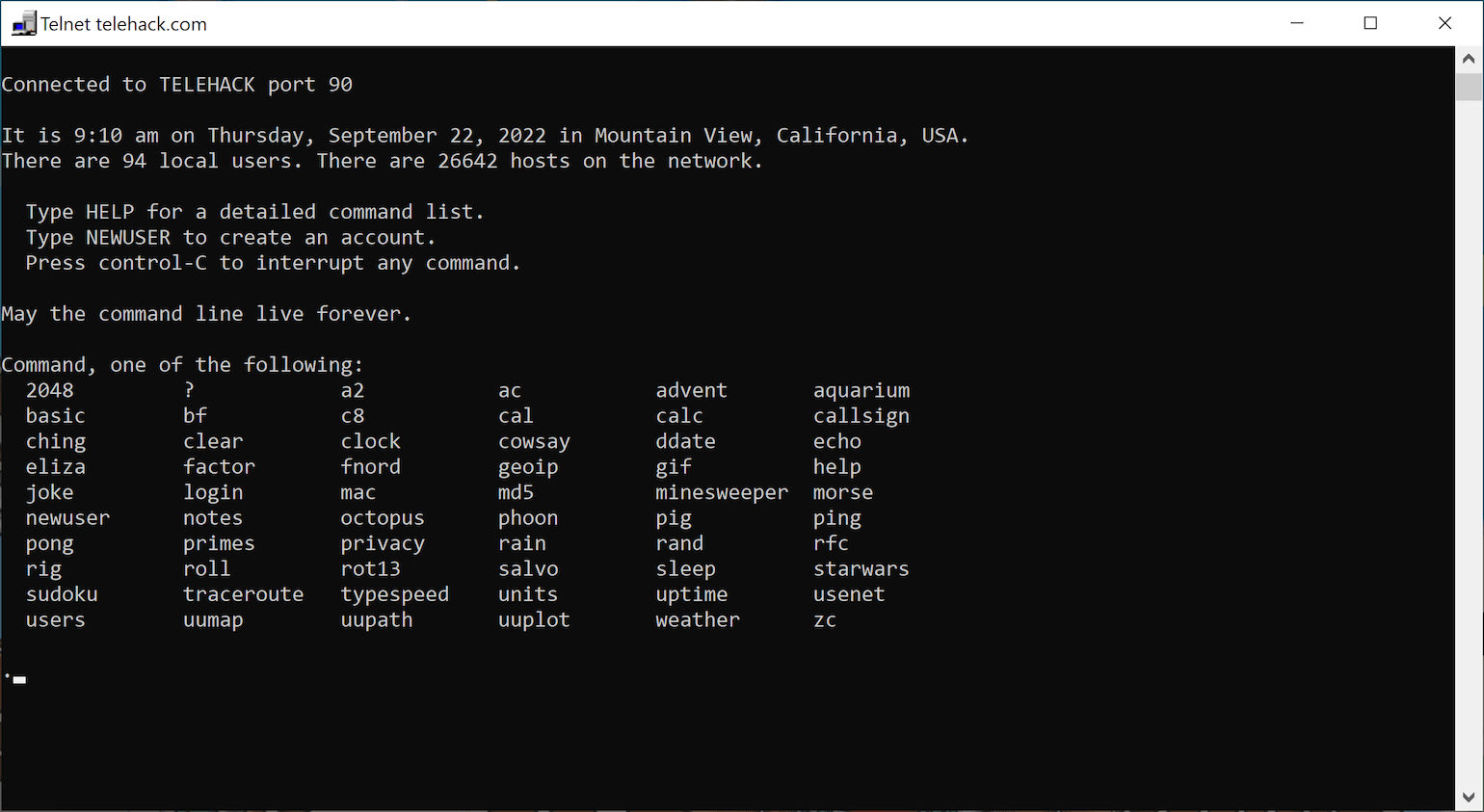Telnet
Telnet is a protocol for connecting from one computer to another using a text-based command line interface. Telnet connections can be made over a local network or over the Internet.
Making a Telnet connection requires a client application on the local computer (where commands are typed) and a Telnet server running on the remote computer (where the commands are carried out). Once connected, the command line on the client will be treated as if it were on the server, accepting input and displaying output.

The Telnet protocol was first developed in 1969 to enable computer users at universities and research institutions to use their room-sized mainframe computers from smaller, more conveniently-located computer terminals. Since it was designed for use on a local network, before the Internet even existed, it does not encrypt its traffic. Information, including user names and passwords, is sent as plain text and can be easily read if intercepted by a third party, so Telnet is no longer widely used. Other protocols, like SSH, are now used instead.
 Test Your Knowledge
Test Your Knowledge